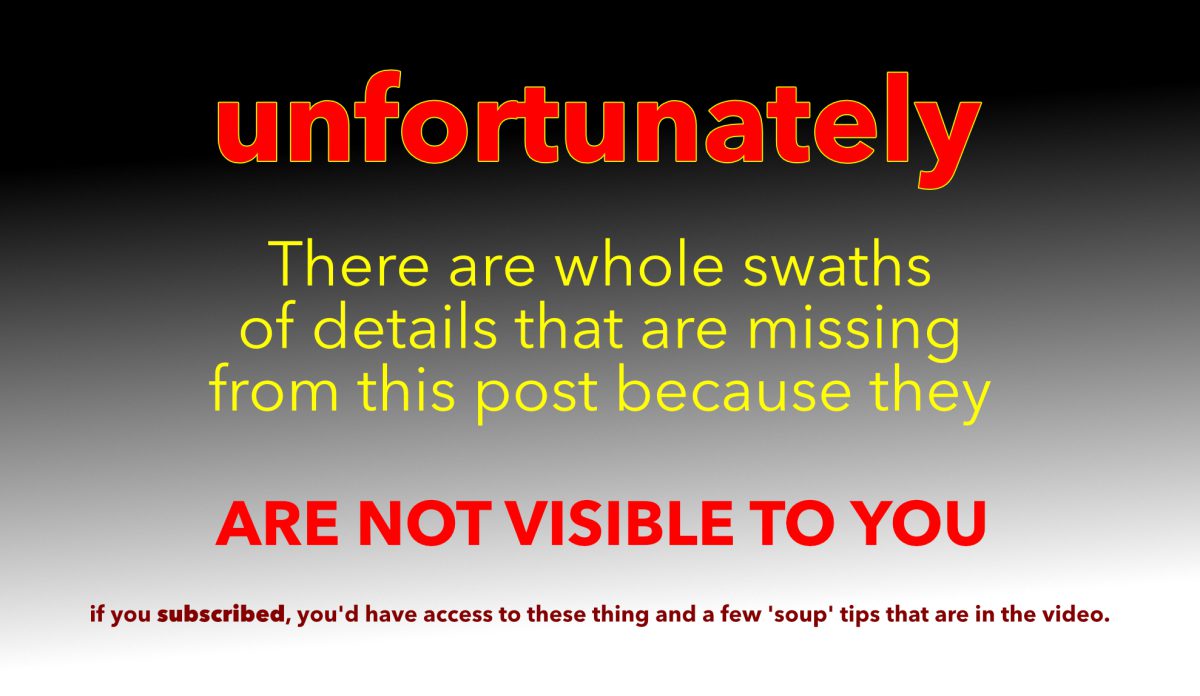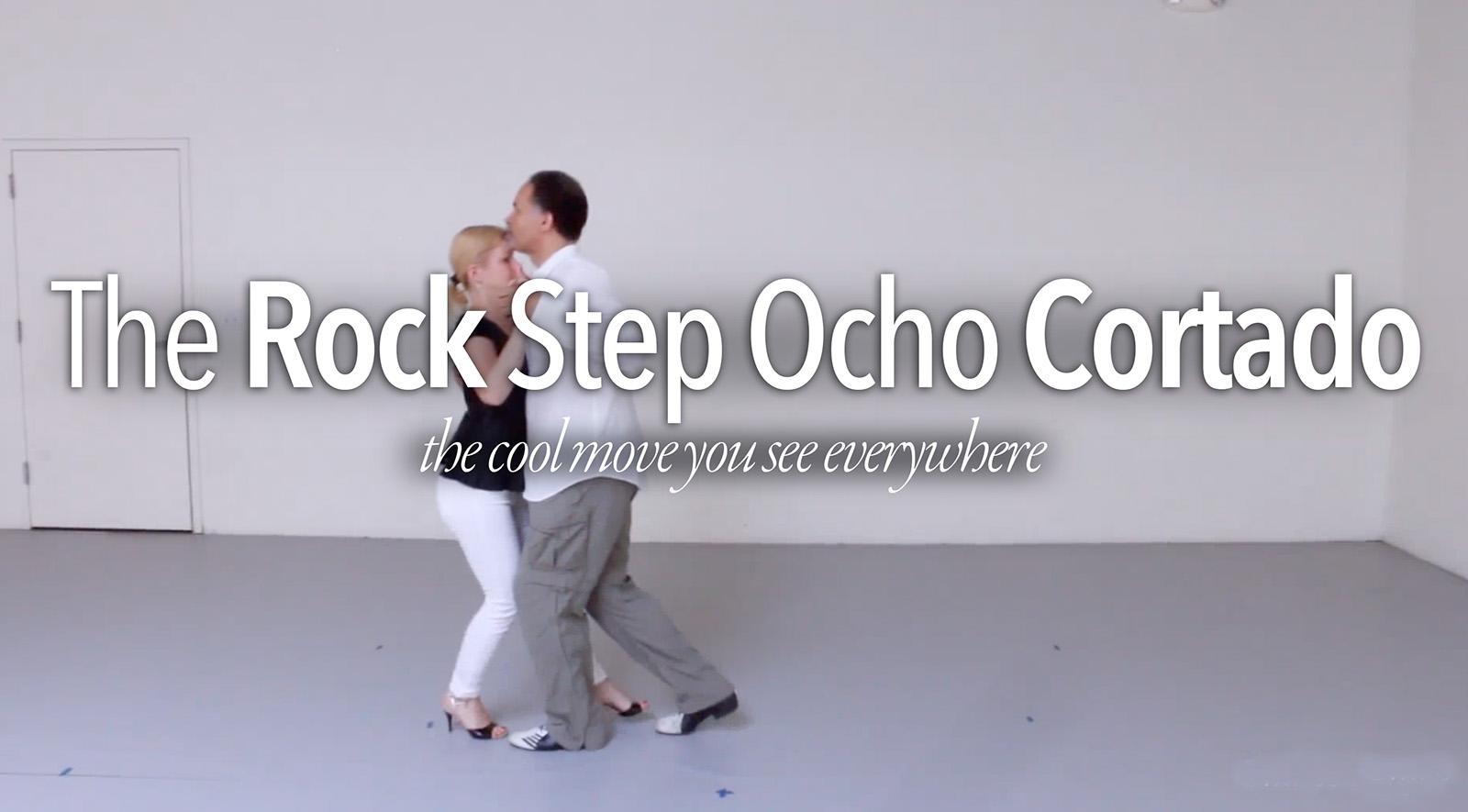There are Eight Turns in Argentine Tango that Tango Topics has identified as Commonly used or Social Turns. There are a few others that are outside of the common eight but for the most part, accept in this moment that there are eight.
Just in case you were curious, the Eight Common Turns are in no particular order: 1.) The Follower’s Molinete/Lead’s Giro. 2.) Milonguero Turn. 3.) Rock Step. 4.) Ocho Cortado (Linear & Circular). 5.) Calesitas. 6.) Media Luna Turns. 7.) Colgada Turns. 8.) Anti-Molinete.
Today’s Tango Topic deals with two of those common eight turns and combines them into one movement so that they actually turn down the line of dance. This is an unusual vocabulary for Tango Topics to display because it is one of the very few figures that we teach/show to our Intensive Level Students (in Level 2 & 3) in the combined version that you’re seeing it here. We typically teach these as separate elements and leave it to the student, later on in their level 2 development of solving Tango Problems, to put them together as a possible solution set.
Some things to keep in mind:
In order for a Rock Step, by itself, to function as a turning element a.) there must be multiples of them, and b.) they must ‘curve’ OR there must be a resolution of some sort from one to the next element.
In order for a Linear Ocho Cortado to be used as a turning element, the step prior to the crossing element must be rotated by the Lead, and/or the Follower’s side step must be curved or rotated slightly.
In either case, these pieces of venerable tango vocabulary are at best ‘quarter turn’ vocabulary. Meaning that they’ll only turn about 90 to 120 degrees under optimal conditions. However, combining these two turns increases the rotational from 90 to about 150 to a potential 180 degrees, under optimal conditions.
If all of that seems very technical for you, think of it this way: By themselves, they’re smaller, individual turns or rotationals. Together they have a bigger and better turning radius. Further still, it’s a kind of cool combined turn to do.
Today we’re going to explore this combination, so without further yapping, Tango Topics presents: The Rock Step & Linear Ocho Cortado!
What Is A Rock Step & Linear Ocho Cortado ? First we have to be very clear, if it wasn’t clear above that these are two very different pieces of vocabulary. Very different. And they’re frequently commingled due to the fact that the opening step of the Linear Ocho Cortado (not the Circular Ocho Cortado) looks very similar to a Parallel System Rock Step without the Resolution. Secondly, we need to be clear about the difference between a Rock Step and that opening step of the Linear Ocho Cortado, which is called a ‘Check Step’.
A Rock Step, put simply, is a step where the Follower is led to stepping backwards, engaging a weight change, and then led to a rebote (rebound) into a forward step that may, as an option, resolve into another step. Usually a side or forward step. These steps can be done in Parallel System (meaning opposite feet – lead left to follower right, and lead right to follower left) or Cross System (meaning same feet – lead left to follower left, and lead right to follower right). The most common of the Rock Steps is a Parallel System Rock Step that starts with the Lead left/Follower Right and does not engage a Resolution, but rather curves a bit, about 45 degrees. Further, and lastly, it should be very clearly noted that while the language above is quite ‘passive’ as to what the Follower is being ‘led’ to do, the Follower is by no means a rag doll here or what Tango Topics calls a ‘dead fish’ in the Lead’s arms. Not by any stretch of the imagination. Nor should they be. They can, and should, when engaging in any of the 8 possible Rock Steps, own them completely and step into them with gusto!
A Linear Ocho Cortado, is an North American construct, at best. Why this idea is more prevalent in the United States and Canada is beyond Tango Topics but it is. In this version of the Ocho Cortado, the Follower is led to a Check Step, then a forward step across their Lead’s body, then a side step, and then led back to a crossing step (more on this later). It should be noted that the Follower does have some level of choice in this particular piece of vocabulary. Not just in where they step, but how the cross is executed, more on this particular element in a bit.
Ok, so now that we’ve defined what these things are, we need to combine them, and in doing so, we create a much more dynamic, and not to mention but we will anyway, a far more useful social turn than the turns are by themselves! This is the Rock Step & Linear Ocho Cortado vocabulary.
The Free Tip. Oh boy there’s a ton of possible tips that I could give you here but probably the biggest one of all, aside from the Replacement Step is that you really do want to create variances with your Linear Ocho Cortado, mostly in the Crossing Step and the Side Steps. There are loads that are possible. But keep something in mind, any variation you make must fit musically on the beat, within the pauses. And if you don’t know what a Musical Pause is, then you really should subscribe and go look at the 5 Musical Pause Types, which will invariably lead you (no pun intended) to the 14 Days of Tango Music, and then Tango Del Dia Part 1 and then Part 2. And once you’ve done that, then it will be time to look at how to interpret all of that stuff with actual vocabulary in the Musical Interpretation Series. Let’s be clear about something, musical interpretation is NOT just a Lead thing. It’s as much attributed to the Lead as well as to the Follower for a variety of reasons.

About The Video. This video is 16m:44s in length in 9 sections. Both lead and follower technique are combined and integrated into the video.
Introduction – 00:04:48 (this is the video above)
– Linear Ocho Cortado – 00:00:54
– A Check Step – 00:00:13
– A Rock Step – 00:00:23
– Parallel System Rock Step with Resolution – 00:00:22
– The Explanation – 00:00:53
– The Creepy Lead Lunge No-No – 00:01:17
– The Socially Acceptable Idea for the Rock Step – 00:00:45
The Follower’s Replacement Step – 00:01:32
The Rock Step/Linear Ocho Cortado – 00:00:54
The Cross System Version – 00:01:54
The Open Side Version – 00:04:19
The Curving Version – 00:01:20
The Closing Ideas – 00:01:24

